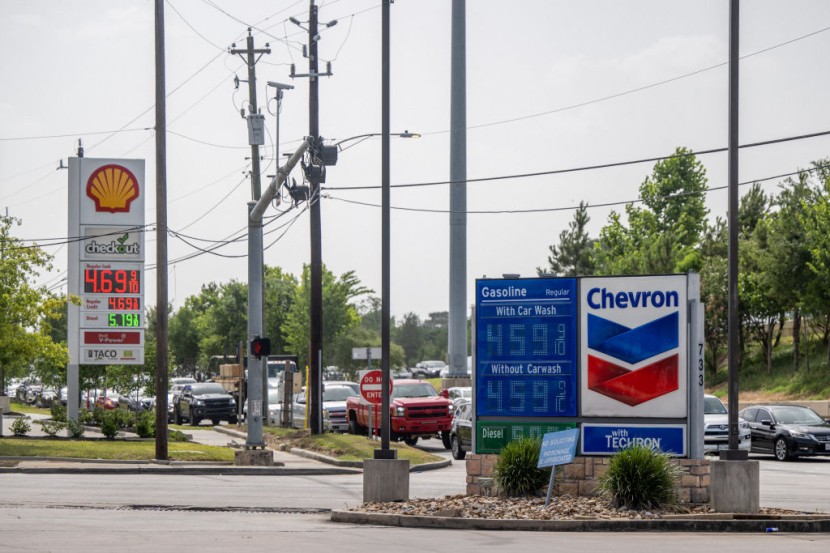
Fuel prices, which had been rising for months, have just leveled down, providing customers with a welcome respite.
Gasoline was a key contributor to the 9.1 percent increase in US consumer prices in June compared to the previous year, the largest yearly increase in four decades. But, for the first time since the COVID-19 outbreak halted the economy in early 2020, gas prices have fallen for 28 consecutive days. According to energy analysts, American consumers are paying $140 million less each day on gasoline than they were a month ago.
US Inflation Surges by 9.1%
Because global oil supplies remain relatively tight, the trend may quickly reverse, especially if a hurricane destroys a refinery on the Gulf Coast. However, for the time being, the nation's stockpiles are progressively increasing, thanks in part to continued releases of oil from the government's strategic oil reserves and lower consumption.
According to the AAA car club, the average nationwide price per gallon of normal gasoline on Wednesday was $4.63, a reduction of more than 2 cents from Tuesday. Prices have dropped 15 cents in the last week and 38 cents in the last four weeks when the average price had risen to just over $5 per gallon.
The drop has been more pronounced in Texas, Ohio, Illinois, and California, all of which are economically significant states, where prices have dropped by 16 cents or more in the previous week.
President Joe Biden was quick to applaud the drop in petrol prices since the rise has been a political liability for him. Gasoline prices are particularly critical for lower-income people, who often drive long distances to work and own older, less efficient automobiles. However, because they see the ups and downs on street corners every day, gas prices shape consumers' perceptions of inflation more broadly, according to New York Times.
Traders of futures contracts linked to the Fed's policy rate are wagering they already have. They are already pricing in a roughly 80% chance of a full percentage-point increase at the May meeting, in accordance with CME Group analysis of the contracts.
This was up from a one-in-nine likelihood before, which also revealed that core inflation, excluding more volatile food and energy costs, rose every month.
The anticipation that the Fed would become more active in combating inflation raises concerns that officials may go too far and stifle economic development. Longer-term Treasury yields decreased, resulting in the most extreme yield-curve inversion in more than 20 years.
An inversion is regarded as a forerunner of a downturn since it indicates that investors are betting on a slowing of growth. Rate futures trade implies that investors believe the Fed will need to decrease interest rates again by the middle of next year, as per Reuters.
Biden Administration Fails on Combatting Rising Inflation
Whatever the federal government does, inflation will continue to grow indefinitely. Despite the Biden administration's and the Federal Reserve's best efforts to decrease inflation, consumer prices climbed.
While a jump in gasoline prices in June was responsible for much of the total increase in inflation, prices rose practically in every industry. That's a worrying indicator for the US economy, especially as the federal government fought to keep the highest annual inflation rate in more than four decades from worsening.
After ignoring the specter of inflation for much of 2021, the Biden government and Fed shifted forcefully toward price reductions. To slow down the economy, the Fed began raising its benchmark interest rate in March.
However, as inflation has accelerated, the Fed has increased interest rates even quicker. The bank raised rates by 0.25 percentage points in March, then by 0.5 percentage points in May, and 0.75 percentage points in June - the greatest single rise since 1994.
The Fed's objective is to raise borrowing costs sufficiently to reduce consumer spending and prevent firms from rising wages at ever-faster rates. Slower economic activity is intended to reduce demand for products and services to levels that firms can meet without raising prices.
However, analysts believe that Americans have pent-up energy and money to spend on things that they missed out on at the pandemic's peak. High inflation is sometimes driven by a mismatch between what consumers and companies desire to buy and what the economy can deliver.
Fears of a Fed-induced recession are also putting additional pressure on the Biden administration to do more to address supply chain difficulties. The president has approved legislation to restrict shipping businesses from raising charges, which analysts think is one cause of goods inflation, and has begun selling oil from the Strategic Petroleum Reserve to fill the hole left by Russian sanctions.
But Biden and the fossil fuel sector are also embroiled in a public dispute about whether oil firms are doing enough to boost refining capacity, which has been depleted by the world's tremendous demand for oil products, The Hill reported.
@YouTube
© 2025 HNGN, All rights reserved. Do not reproduce without permission.








